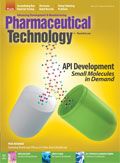How to Stay Abreast of Shifting Regulations and Remain Compliant
Siegfried Schmitt, principal consultant, PAREXEL, discusses how to keep up with changing regulations.
Q. We are a medium-sized company and our products are sold in nearly 70 countries world-wide. Consequently, we are inspected by several agencies. These inspections resulted in some observations for not complying with the current good manufacturing practice (cGMP) regulations. Because our quality unit is relatively small, it is challenging to stay up to date with the latest regulatory changes. What are the best ways to stay abreast of shifting regulations to remain compliant?
A. As you are aware, companies must comply with currently applicable regulations. To do so, you will need individuals, ideally from the quality unit, dedicated to gathering regulatory intelligence. This process includes collating information on existing and anticipated laws and regulations. Such information is available from a variety of sources including from the regulatory agencies themselves, free newsletters, and commercial providers.
Regulatory intelligence does not stop there. Teams must analyze whether regulations will impact your company’s quality system, operations, or regulatory dossier/application. Sometimes new or changed regulations come with a defined implementation (‘grace’) period, while in other instances they are immediately enforceable upon publication. The European Union EudraLex Volume 4, Chapter 3 on Premises and Equipment, for example, was revised in August 2014 but was not enforced until March 1, 2015 (1). In some cases there is only an expectation, which may be embedded in guidance documents or in concept papers published by a regulatory agency. For example, the Medicines and Healthcare Products Regulatory Agency first issued a guidance document in January 2015 that sets a 2017 deadline for compliance to certain data integrity aspects (2). Similarly, 21 Code of Federal Regulations Part 11 Electronic Records; Electronic Signatures in the United States has an effective date of Aug. 20, 1997 (3).
Once the regulatory intelligence team has reviewed and analyzed changes to the legislation for applicability and impact, it is then tasked with communicating and disseminating it to all the relevant parties within the company including the quality unit, production departments, logistics teams (e.g., for good distribution practices), and regulatory affairs. Process owners in these various departments must implement the changes to comply with the new requirements. The quality unit needs to verify timely compliance through internal audits throughout the process.
At the very minimum, companies must establish a regulatory intelligence function to gather information and proactively help shape new legislation. Most new laws and regulations go through an ‘open comment’ period where interested parties-either individuals or members of industry associations--can provide feedback and ask clarifying questions to help eliminate errors, point out omissions, or suggest changes.
Establish a dedicated regulatory intelligence function, put the right communication channels in place, and empower your quality unit to verify compliance in a timely manner. Doing so will help you stay current with applicable regulations and compliant with new and amended laws.
References
1. European Commission, EudraLex, The Rules Governing Medicinal Products in the European Union, Vol. 4, EU Guidelines for Good Manufacturing Practice for Medicinal Products for Human and Veterinary Use Part 1, Chapter 3: Premises and Equipment.
2. MHRA, Good Manufacturing Practice: Data Integrity Definitions And Guidance, Jan. 23, 2015, Re-issued March 13, 2015.
3. FDA, Title 21 CFR Part 11, www.accessdata.fda.gov/scripts/cdrh/cfdocs/cfcfr/CFRSearch.cfm?CFRPart=11 and http://www.fda.gov/downloads/RegulatoryInformation/Guidances/ucm125125.pdf.
Article DetailsPharmaceutical Technology
Vol. 39, No. 5
Pages: 66
Citation: When referring to this article, please cite it as “How to Stay Abreast of Shifting Regulations and Remain Compliant,” Pharmaceutical Technology39 (5) 2015.
